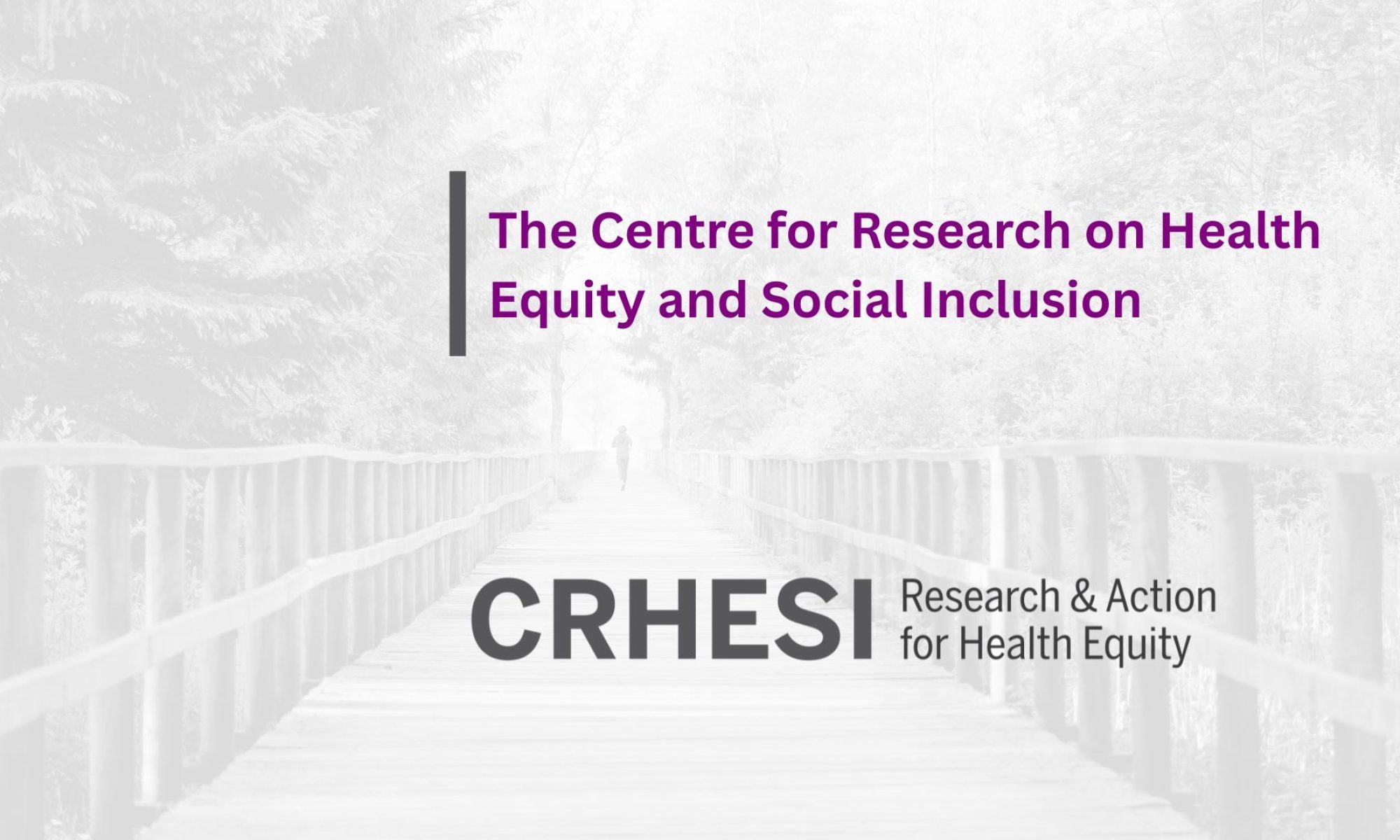By Gabriela Valdivieso, Maricarmen Valdivieso
Directors, Nexos Comunitarios (http://www.nexos.org.pe)
Latin America is the most unequal region in the world. In spite of this, at least in Peru, we often hear people saying that COVID-19 has made us equal. Is it though? As of mid-September, our country had surpassed 30,000 official deaths from COVID-19. According to a chronicle by Jacqeline Fowks and Jorge Galindo from El País, the wealthiest district in Peru, San Isidro in Lima, reported 421 deaths between March and August 2020. Meanwhile, one of the poorest districts in the capital, San Juan de Lurigancho, reported 5,463 deaths.
In Urubamba, the province where we work, 65 deaths have been reported, however, Urubamba is one of the four regions in the country still under strict lockdown.
The impact of COVID-19 in Peru has been explained extensively around the world. The virus exposes weak links of success stories and the Highways of Peru swell with families fleeing virus from Lima to the provinces and within the provinces. People who lost their jobs in the cities went back to their communities, increasing the number of inhabitants in one house, the number of people that require food to live and having an impact on the economy of their families.
It is clear that our health system in our country was far from being prepared to address the pandemic. However, the impact of it, was not the same for everyone. This virus did not affect us equally. When crises emerge, those who suffer the most are almost always those who are more vulnerable, those with few resources, those who live in poverty. Poverty is a topic that brings attention and its eradication it is the Sustainable Development Goal #1: End poverty in all its forms everywhere (by 2030). Before the pandemic it seemed unrealistic that we were going to accomplish the goal. After it, eliminating poverty might seem impossible. To accomplish this and the other 16 goals, we have done a lot, but it has not been enough.
During the last decade, we have witnessed countless admirable initiatives to improve the world by alleviating poverty in regular business, in social business, and in the non-profit world. The Demographic and Health Surveys (DHS), in Bolivia, Colombia, the Dominican Republic and Peru show mortality rates for the under -5 years old to have dropped significantly.

We should celebrate this success. Nonetheless, regardless of how positive the news on alleviating poverty seemed, one question echoes in our mind: In reality, was the eradication of poverty the goal? According to the UN, one out of five children in the world live in poverty and the repercussions last for, most likely, all their lives.
The lives of indigenous people for a community in the High-Andes of Peru before COVID-19
Damiana from Cuncani (Cusco, Peru) who has given us permission to share her story. She is a single mother who takes care of her daughter, her nephew (whose mother died while giving birth), and her father. When Damiana was younger, she left the community to work in the city of Cusco. Despite her hard work and aspirations to be successful, she was forced to return to her home village due to a lack of opportunities, discrimination and the birth of her daughter.
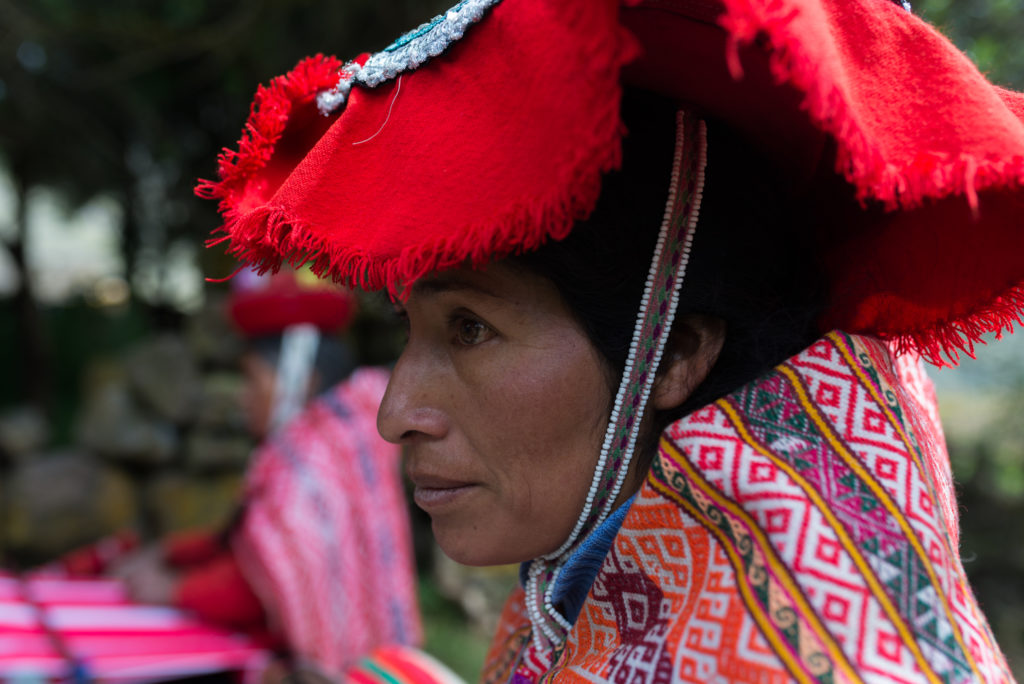
Similar to many women in the Andes, Damiana is very strong. Unlike many women in her community, she is literate and finished high school. Beyond that, she has a paid job with the government in the Cunamas program to support mothers with children 0-3 years of age and living in communities of significant disadvantage. For her work in the social program, she receives USD 112 per month.
Furthermore, besides her work at home and for the program, she has the personality of an entrepreneur, eager to participate in workshops to learn how to sell handicrafts. She was especially keen to know how to become involved in the tourism area and increase the opportunities to improve her income.
Damiana’s story is not uncommon. How many similar stories have you read? How do people like Damiana with her intelligence, skills, determination, and strengths still live in poverty?
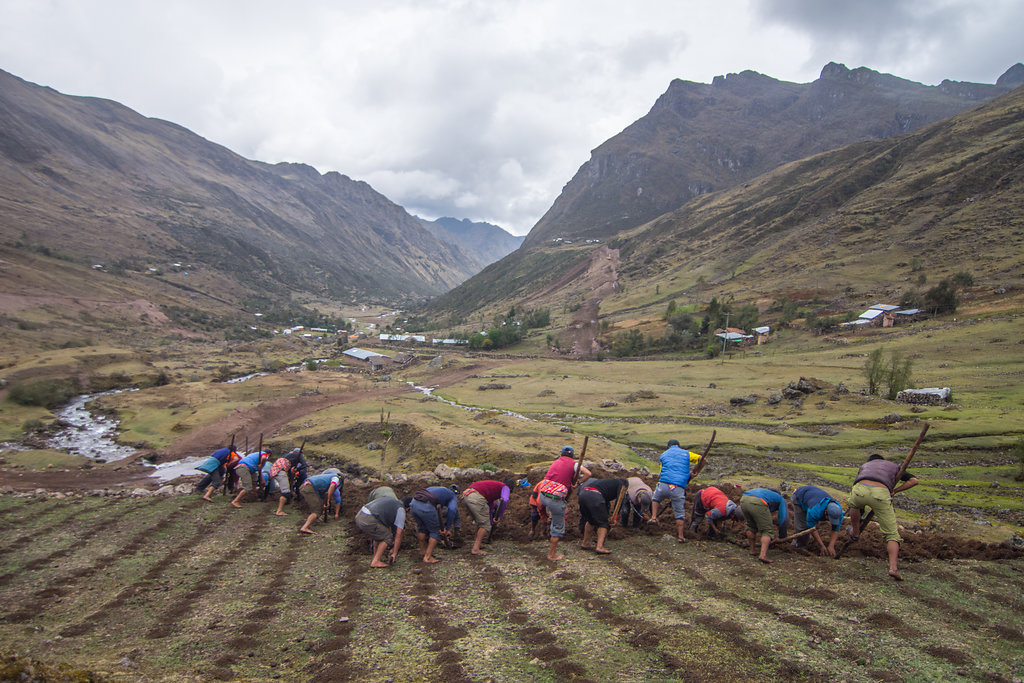
Whereas one person can do everything they can to overcome poverty, several factors need to be considered.
Peru, a middle-income country, despite of all its many flaws, has improved its path to eradicate poverty. Within the last years, our government has implemented efficient programs such as Juntos (a cash transfer program) Q’ali Warma (a program to provide food to children at schools), Pension 65 (to provide economic subsides and social protection to elderly), among others. Besides these efforts, we have a high number of non-profit organizations like Nexos Comunitarios, social entrepreneurs, and other type of initiatives, all with the intention of making a positive impact in our society.

Despite Peru’s effort to improve the lives of its citizens, we live in a region that has the highest rates of inequality. What happens to a person who lives in poverty in Latin America? According to one of the latest reports of the Inter-American Development Bank:
Inequalities start early in life and widen during childhood and adolescence with the result that children from different backgrounds have unequal opportunities to grow and develop. The poor and lower-middle classes live in different neighborhoods, attend different schools, and visit different health clinics. They are much more likely than the wealthy to be victims of violent crime and far more exposed to the destructive effects of climate change—while also less able to cope with the consequences of both.
In education, children from wealthier families tend to be better prepared for school than those from poor families. When beginning school, children from high socioeconomic backgrounds perform substantially better than their poorer peers in socioemotional, cognitive, and linguistic development. These disparities widen over time. By the time young people reach the labor market, their effects become glaringly apparent: The better- prepared have first pick of the high-quality jobs in the region’s relatively small formal sector, while the less-prepared, who are disproportionately from poorer backgrounds, are likely to spend the rest of their lives in informal jobs. Formal employment brings access to safety nets, such as contributory pensions and, in some countries, unemployment insurance. By contrast, most workers in the bottom 40 percent of the income distribution have informal jobs that carry no safety net at all1.
If you were born in a poor family in Cuncani in Peru, the description above would be your reality and your future. If you were in their shoes, what would you do to overcome your situation? What should your government, fellow citizens, non-profits, and companies should do to help you? Especially right now when many people are struggling with the effects of COVID-19 on top of poverty?
The lives of indigenous people for a community in the High-Andes of Peru after COVID-19
We are all experiencing the effects of this pandemic. However, it is important to keep in mind that those who have less often suffer the most. Due to the way we have built our world, it is not the same to suffer from a noncommunicable disease such as cancer and live in an isolated, excluded, indigenous rural community than to fight it in a country where your health insurance is, unquestionably, universal. Treatments for those patients need to be equal and fair.
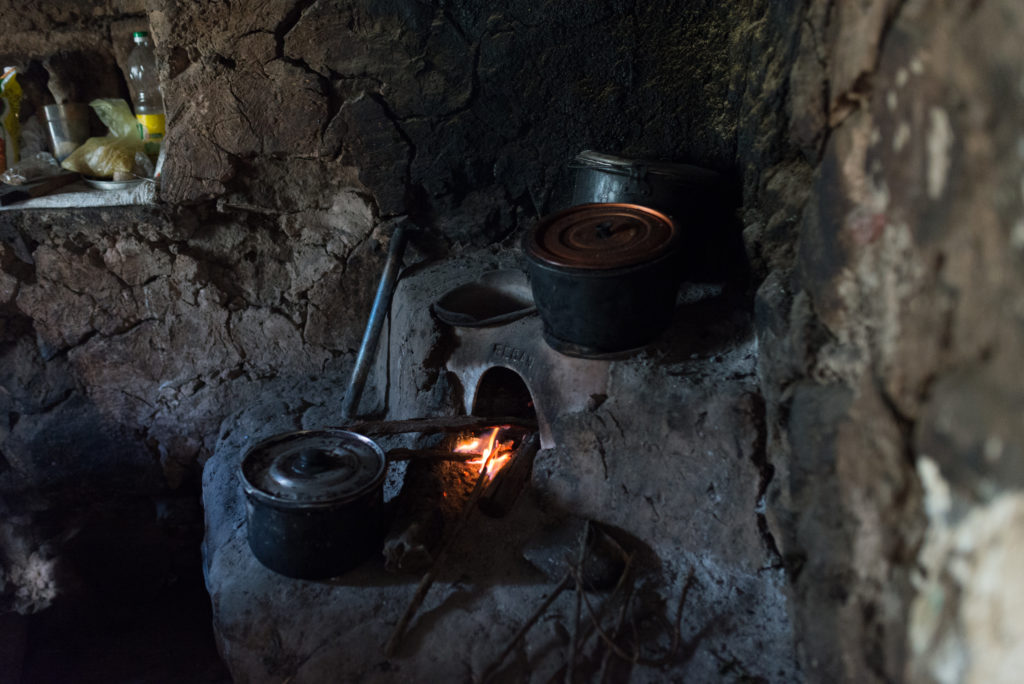
A summary of the history of nutrition in the community of Cuncani.
Back in 2013 when we started our first Lunch Program for the children of primary school (in partnership with the school), 68% suffered from anaemia, two years after that, only 4% of them continued in this situation. Since that moment, children remained without it. The assistance we have been able to provide has allowed the kids to pay more attention during classes. It has also alleviated their respiratory problems therefore decreasing the need for medication that was only available in the capital of the province (located 8 hours away walking distance or 3 hours away in a public transportation).
Despite the positive outcomes of this simple but efficient project, it is not a sustainable solution. The project needs to be implemented, hand in hand, with other projects. Solutions to poverty are complex and even before the pandemic, poverty in rural areas was three times than in the urban setting2. Regardless of the positive impact of the project, children, at home still have a poor diet. The evidence is this Photo Journal report created by children in the community of Cuncani.
Besides the Lunch Program, our organization has tried to work closely with the families looking for a sustainable solution. It has been a struggle. To list a couple of reasons, we found that parents were reluctant to change some diet habits and donors were unenthusiastic to not see fast and tangible changes. Tackling malnutrition in an indigenous, rural community living in extreme poverty in the High-Andes is complex.
Covid-19 has exacerbated the nutrition issues already evident in the community. Their daily diet consists almost exclusively of potatoes direct their land. According to the principal of the school, malnutrition and the neglect of local authorities are the biggest problem the pandemic brought. Children from four years old who receive additional food for breakfast through the national program, Q’ali Warma, will receive the last installment this September3.
The food insecurity keeps deteriorating whereas their low income has been reduced and their access to the market an hour’s walk away is once a month at best. The decrease of their income is a consequence of the lack of tourism in their region. Cuncani is part of Cusco region and lies along the route of many treks taken by tourists en route to Peru’s number one attraction, Machu Picchu. Most of the community members rely on that income. Although sporadic and minimal, it boosted their small incomes significantly during the high tourism season.
All that said, one cannot underestimate the strength of the Andean people to adapt. Two years ago, when we intended to work with the families, we were only successful with 8 of them. A month ago, our organization was distributing vegetable seeds to the 85 families that were living in the community (the number has increased to a 100). Their lung capacity to live at an altitude over 3500 meters is matched equally by their capacity to care for each other and persevere as a community.

The school as the only presence of the State.
Despite being considered as one example of the prosperity in the region, the level of education is still poor. PISA test is organized and conducted by the OECD to measure a 15-year-old’s knowledge in reading, mathematics, and science across the globe. It has been criticized for the inability to measure the overall well-being of the children. According to the recent PISA report in 2018, Peru has shown a general improvement in their overall performance. Nonetheless, the educational level of Peru remains relatively low compared to country members of OECD.
The community where we work has a Multigrade Primary School, which represents the only symbolic presence of the state in the community. At the same time, it represents how isolated Cuncani really is. When the pandemic started, the government implemented Aprendo en Casa, a national program that provides distance learning through radio, TV and internet to all households in Peru. The initiative has continued education for millions of children at a time when education looked to come to a halt at the start of the new school year. The impact of this and similar approaches use different tools and adjust to their reality. In New Jersey, Thailand and Peru TV Lessons Replace Online Learning.
Aprendo en Casa is one of the positive approaches the Peruvian government took to tackle the effects of the pandemic. However, there are still communities in Peru where the only signal available is the one coming from the radio. For instance, in Cuncani, children have been receiving their classes through the radio and have received the visit of the principal of the School, Prof. Serafín Iruri, who is the only visitor accepted by the community.
Classes via radio have good intentions but lack efficiency. The children receive their classes in Spanish and due to the quality of the signal do not fully understand each of the classes. Moreover, homeschooling these days — no matter if children have access a device and the Internet or not — requires the support of their parents. Unfortunately, a good number of parents in the community are illiterate and they can’t support their children’s learning process. Therefore, some of the children are quickly losing interest in classes and doing homework.
There is some hope in the community thanks to professor Serafin. Besides his weekly visits to the community, sometimes he sends messages on the radio to communicate news. Recently he told us: “Every time I put a message on the radio, the children are waiting as if they were hungry, now it is the hunger to learn. The desire to learn, to read, to write, to interact with their classmates.
Leaving your home for school is a fundamental change that we are seeing. When we go, they don’t even want to go out for the recess. Even though we tell them to go out for recess, they anchor themselves in the classrooms and shout: ‘Give us homework!’, ‘Leave us homework from the book to make the index cards’. ‘What else are we going to do this week?’ ‘Very little –homework- is giving us”. They ask us for more days, the parents too” 4
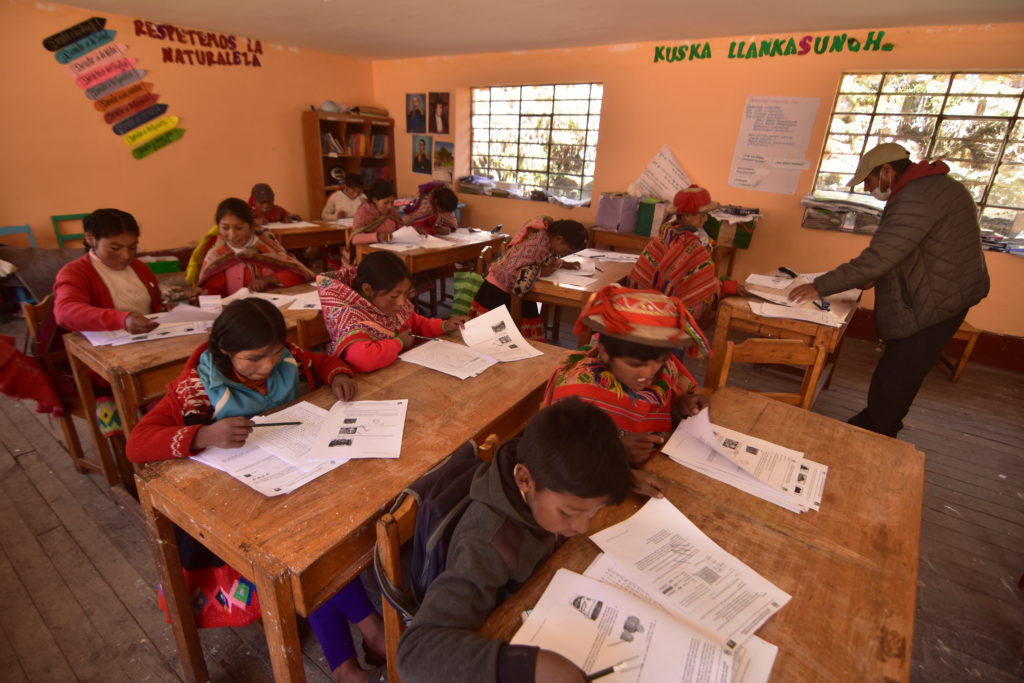
Last month, we were able to install an antenna in the school so children can take turns watching Aprendo Contigo and understand better (although the classes are also in Spanish). It was a glimmer of hope with much more to be done.
The government has also worked in another approach: the distribution of tablets to children who are in a vulnerable situation. This initiative was announced back in April, however, after five months the distribution still has not started. The introduction of technology to children would be very beneficial, especially because the government has promised to include free internet as part of the package. According to the principal of the school where we work, the content of the lessons will be based on the reality of the children. For example, for the children in rural areas, they will be learning about farming and livestock. For some educators, these lessons will help them to have better lives and take advantage of their resources. Professor Serafin, however, believes these types of lessons will prevent the children from learning other important lessons that may inhibit them from having other opportunities in their lives.
Poor before, poorer now. Would we act differently after Covid-19?
The eradication of poverty is a complicated puzzle and there is no simple solution to it. Each country needs to consider its history, its cultures, its social scars to find ways to be able to accomplish it. But for that to happen, we need to learn about it. We need to try to understand it. We need to DO something. Some of us might never experience the level of poverty that is the reality for millions of people in Latin America, Africa, Asia and even in Europe and few countries in North America. We, at Nexos Comunitarios, have spent years working in the field, witnessing and experiencing what they eat and how they live, but we will never be able to understand fully how poverty is preventing them to have a standard quality of life. If that is the reality, and we truly want to eradicate poverty, what we can do?
It has been more than six months since the pandemic started and affected, in one way or another, everyone in this world. If you reading this article, let us ask you, how many stories of people living in poverty have you read in your life? Each story it is important, each human being deserves all efforts to have a standard quality of life, nonetheless, the eradication of poverty it is a complex task. Poverty is a result of different situations. Although there are millions of people suffering from, there are other millions that have never experienced it and may never will.
Throughout all these years, we have applauded improvements based on indicators that, at least, should be questioned by us. For instance, for the World Bank, in its website indicates: “there has been marked progress on reducing poverty – the first of the world’s Sustainable Development Goals – over the past decades. According to the most recent estimates, in 2015, 10 percent of the world’s population or 734 million people lived on less than $1.9 a day. That’s down from nearly 36 percent or 1.9 billions of people in 1990.” Whether we want to see our lives with an optimistic or pessimistic eye, to have an indicator such as $1.9 per day to be considered poor or not should be, at least, debatable. Last July, Mr. Philip Alston, the former UN Special Rapporteur on extreme poverty and human rights, released his final report.
In his statement, professor Alston, refers to Bank’s line: “But the line is scandalously unambitious, and the best evidence shows it doesn’t even cover the cost of food, or housing in many countries. The poverty decline it purports to show is due largely to rising incomes in a single country, China. And it obscures poverty among women and those often excluded from official surveys, such as migrant workers and refugees.” He continues: “Even before the pandemic, 3.4 billion people nearly half of the world, lived on less than $5.50 a day. That number has barely declined since 1990”.
The government it is responsible to protect their citizens. Furthermore, as Carolina Trivelli, first Minister of the MIDIS – Ministerio de Desarrollo e Inclusión Social (Ministry of Development and Social Inclusion) said, “To take care of the poor it is not a gift, it is an obligation of the State”. This responsibility has increased during this year due to the pandemic. This crisis, although more complicated and harder than any other we have lived, puts in great danger the lives and future of the poor, more than others. Peru has experience of reacting after crisis. Back in 2017, the northern region of Peru suffered from the phenomenon of “El Niño”, 84 people died and many lost everything, including their houses. Our organization provided support through immediate assistance with food and water in the tents they were leaving during those days.
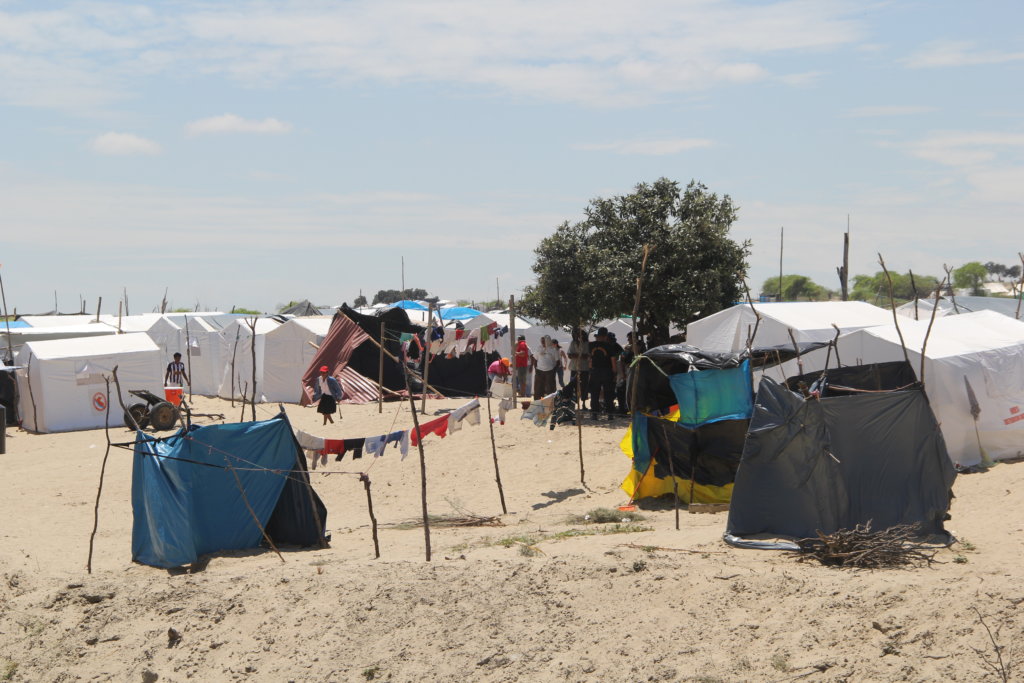
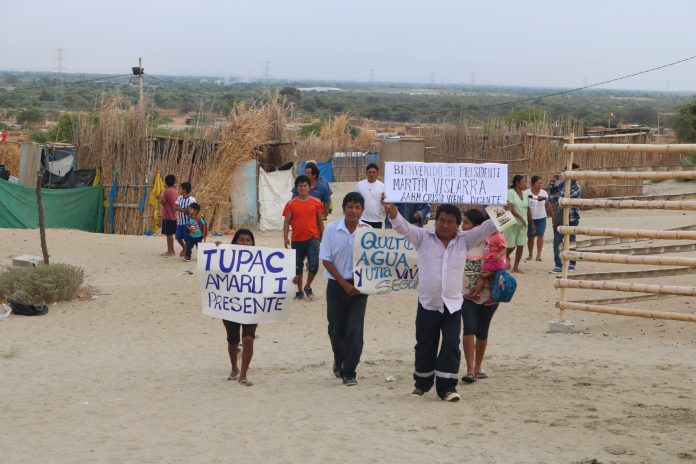
The government provided immediate assistance, supported by citizens, churches and non-profit organizations such as ours. However, it has been more than three years, and close to 4,000 people are still living in this area with houses made with straw and without electricity, water service or sewage system. Recently and after several protests, the government has promised the construction of a new project of houses that will start this October.
What happened in Peru in 2017, and the reaction of our government and society, could happen in another parts of the world, particularly in countries with a high rate of poverty. The reactions to a human suffer and tragedies such as flooding situation or lack of food due to a pandemic produces immediate reaction from our governments and society in general. We have been raised to do something, to extend our hands when someone needs it.
Yet, what is currently happening in our world, does not only require immediate reactions, it requires a different and bold approach. The story of our community partners is one of thousands of stories of communities in Peru, in Latin America and worldwide. How people living in poverty are experiencing the effects of the pandemic is the result of the environment we set up in the past and we can’t go back to that.
The government
The government should look for two type of policies: a support package that provides immediate assistance to those who are living in a precarious situation for the time needed and another one that aims to address inequality and exclusion. The combination of both can create a more efficient solution to overcome this situation while mitigating the damages Covid-19 has created.
For the first package. The government should remember how important is to build human capital to generate development for our country. For instance, lunch programs such as ours. However, this is just one idea and many others can provide immediate and necessary assistance. Yet, one important component of the initiatives, should be the participation of the community involved. The initiative should rely on the capacities of the community. For instance, in Lima, the ollas comunes – community-led soup kitchens – are a good example of resilience and participation. And, when this type of organization has been lost, the provision and preparation of food could lead the community to strengthen their ties and working in a more efficient way.
This type of initiative that often seems only aid to the communities in need has the potential to leverage the results if they are designed while considering the reality, potentiality and challenges of the community where they are going to be implemented. A Lunch Program that relies on the organization of the community has the capacity to build human and social capital, both needed for growth and development of the country.
For the second package. There are different measures that must be taken to address inequality and exclusion. Here are a couple of them we believe there are necessary:
- Financial inclusion: one of the centres of infection of the virus were the banks. When the government decided to provide bonus to more than 4 million families that required immediate assistance, many of them went to the banks to cash their bonuses, due to the lack of bank account. The queues, the waiting, the use of bills transmitted the virus. As Trivelli wrote: “We need to make agreements that assure a universal connection – minimal and by default – with each citizen through the financial system.”5 The financial gap existed in the urban setting gets higher in the rural area. For instance, in the community of Cuncani, there is no bank where they can withdraw or deposit the money. The closest ATM is located in Calca, 3 hours bus ride from the community or 6 hours walking distance to Urubamba, the next closest district. For this emergency, the government sent the bonus through its employees, directly to the community. They received it after 1 or 2 months of delay.
- The rural inclusion: its population has been excluded for many years. There is an enormous gap between the rural and the urban worlds in terms of opportunities, access of public services and quality of life in general. The rural population, despite their hard work and the fact that they provide the food to our tables, receive a minimum recognition for their contribution and are not included on receiving the amount benefits of receive by others. For instance, our country has more than 3,000 varieties of potatoes. Meanwhile, our partners in the community have approximately 100 varieties on their family farm. Yet, when Peru is recognized for its wonderful Andean gourmet food, little of the profits and actual recognition goes to the rural population. This recognition should be made in a more public way and transform in tangible benefits for the inhabitants of the rural world.
These are just two examples of what we need strongly work on. It is important to protect ourselves from the virus and keep ourselves with good health. But in a bigger picture and if we really want to improve the lives for those who live in poverty, we need to go beyond promoting policies or initiatives that are palliatives but can’t construct any other reality.
US
Whereas the government has the responsibility to protect its citizens, there still the responsibility of all of us as fellow citizens. In the world we live these days, we can learn about the reality of almost any country in the world, we can’t travel right now but we have done it, intensely, for a very long time.
Then, what is happening to us as a society?
According to Víctor Vich, “the paradigm that we need to change is that one that proclaims that only children and youth need to be educated. We need to re-educate all of us (…) What we have lived, what we are living, invite us, without hesitation, to transform our conception of what is fair” 6
What is fair to you? How would you qualify poverty?
One citation we always remember in our work was said by Nelson Mandela: “Overcoming poverty is not a gesture of charity. It is an act of justice. It is the protection of a fundamental human right, the right to dignity and a decent life”
Poverty could be a political choice, but also reveals how our society is. Whilst policies, NGO work are needed are important, your commitment to the eradication of poverty it is crucial too. Us, as citizens of this world, can and should do a lot. What we are experiencing with Covid-19 could be less than what we may experience soon due to climate change. Let’s be ready to address the challenges.
First, learn about poverty. Read the stories and talk to people who live under this situation. Show compassion. Nobody deserves to live in poverty.
Second, do something. Volunteer for an organization, make donations, generate awareness for what is happening in the world by demonstrating your commitment.
Third, continue to support grassroots organizations, research centers and yes, your government also. The leadership of the government in the eradication of poverty in your country is necessary. Participate in the programs and spread the truth when you witness injustice that exacerbates the existing poverty in your country and in any country in the world.
Fourth, keep growing as a person and as a citizen. The future of our world IS in our hands. We might have the perception that only authorities and certain groups of people have the power to make changes, but at Nexos Comunitarios we have the abiding conviction that we all have the power to do something as long as we grow and remain committed citizens who practice empathy and compassion, those important values specially these days.
Despite the daily discouraging news, there are innumerable demonstrations of how empathetic and compassionate we can be. Think about how many times you have participated in a fundraiser? How many times have you volunteered for your community or even for a remote community in a country you never visited before? Now think, what else you can do for those who need our help.
Covid-19 is leaving us with a lot of pain, a lot of struggle but also with a lot of lessons. With determination, let’s commit ourselves to put the foundations for a better world. We might not see the results in this life but we can certainly ease the path for the next generations.
1 The inequality crisis: Latin America and the Caribbean at the crossroads / editors, Matías Busso, Julián Messina.p. cm. — (IDB Monograph; 837)
2 Trivelli, C. (2020, July 5). Interview with Carolina Trivelli (Interview by Emilio Camacho for La República)
3 Iruri, s. (2020, August 27). Personal interview.
4 Idem.
5 Asensio, R. (Ed.). (2020). Crónica del Gran Encierro. Pensando el Perú en tiempo de pandemia. IEP Instituto de Estudios Peruanos. https://iep.org.pe/wp-content/uploads/2020/06/Crónica-del-Gran-Encierro-1.pdf
6 Idem.
